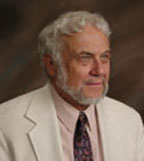Synchronicity and the Mind of God
Citation: Grasse, Ray. "Synchronicity and the Mind of God." Quest 94.3 (MAY-JUNE 2006):91-94

Most of us have, at some point or another, experienced certain unusual coincidences so startling they compel us to wonder as to their possible significance or purpose. Do these strange occurrences hold some deeper meaning for our lives? Or are they simply chance events, explicable strictly through statistical processes and probability theory, as most modern scientists would contend?
Among those who wrestled with such questions was the famous Swiss psychologist Carl Jung. Having experienced many such events himself, he eventually coined the term synchronicity to describe what he saw as the uncanny phenomenon of meaningful coincidence. While some coincidences were indeed meaningless, he wrote, every now and then we encounter those confluences of circumstance so improbable that they seemed to hint at a deeper purpose or design in their occurrence.
To explain the workings of such phenomena, he theorized the existence of a principle or law in nature quite different from that normally described by conventional physics. Whereas most visible phenomena in our world appear to occur in a linear, cause-and-effect way, like dominos falling upon one another, synchronistic events were "acausal," in that they seemed linked by deeper archetypal patterns rather than by linear forces. For instance, the presence of Baum's coat on the film's set didn't in any way cause the making of the film, nor did the making of the film bring about the coat - they simply were dual expressions of the same unfolding matrix of meaning. In this way, Jung postulated two primary types of acausal relationships: Between two or more outer events in a person's life, or between an outer event and an inner psychological state.
Since first being published in 1952, Jung's concept has become an increasingly familiar one throughout popular culture, having made its way into the plot lines of TV shows, best-selling works of fiction like The Celestine Prophecy, and even the lyrics of rock songs by groups like The Police. In more philosophical quarters, there have been many attempts to shed further light on this important notion, with some even speculating, in the footsteps of Jung himself, that the key to understanding synchronicity might someday lie within the discoveries of quantum physics. As Robert Anton Wilson wrote nearly two decades ago:
Jung was on the right track. He kept insisting that somehow, somewhere in quantum theory, the actual mechanism of synchronicity would be found and defined. In the late 1980s, it begins to look as if we have started to understand it. (50)
Yet for all of this, the mystery of synchronicity remains unsolved. A half-century later, we still find ourselves essentially no closer to unlocking the deeper mechanism underlying Jung's concept than when it was first introduced. Why is this?
One possibility might be that we have been looking in the wrong place for our answers. Could it be, in other words, that we have been approaching this problem from too narrow a perspective, and in so doing missing the forest for the trees? By way of analogy, consider the well-known parable of the blind men and the elephant: Five sightless men come across a great elephant, and each one tries to determine its true nature from their own limited perspective. For one, grasping only its trunk, it seems like a large snake, while for another, feeling only its leg, it appears like a tree, and so on. Because of their partial vantage points, none of them can really grasp the true nature of this beast, which can properly be understood only from a larger, more global perspective.
What, then, is this "different cosmology" to which I refer? It is a perspective other writers and I have referred to over the years as the symbolist worldview. This perennial viewpoint has been expressed through the centuries by such diverse figures as Plotinus, Pythagoras, Emerson, Jacob Boehme, and Cornelius Agrippa, to name a few. This way of thinking holds that the universe is a reflection of an underlying spiritual reality, and that all phenomena and forms are symbols of deeper truths and principles. As the Swedish scientist and mystic Emmanuel Swedenborg wrote in Heaven and Hell, "There is a correspondence of all things of heaven with all things of man." All things reflect the deeper ideas and principles of which they are a tangible expression or "signature," and can be deciphered for their subtler significance.
For the symbolist, all events and phenomena are to be regarded as elements of a supremely ordered whole; like the intricately arranged threads of a great novel or myth, the elements of daily experience are perceived as intimately interrelated, with no situation or event out of place, no development accidental. Consequently, even a seemingly trivial occurrence may serve as an important key toward unlocking a greater pattern of meaning: The passage of a bird through the sky, the appearance of lightning at a critical moment, or the overhearing of a chance remark—such things are significant to the degree we perceive them as interwoven within a greater tapestry of relationship.
Pervading the warp and weft of creation exists a web of subtle connections known as correspondences. The American essayist Ralph Waldo Emerson once said, "Secret analogies tie together the remotest parts of Nature, as the atmosphere of a summer morning is filled with innumerable gossamer threads running in every direction, revealed by the beams of the rising sun" (949). Throughout the ages, magicians and esotericists labored to construct elaborate "tables of correspondences" which attempted to link all the parts of nature in a grand web of harmonies. In this way the Moon is said to be linked with such other symbols as the home, women, the principle of change, and emotions generally, while Mercury is linked with matters of communication, publishing, travel, the mind, and so on. Understanding the essential principles that underlie all phenomena provides the esotericist with a skeleton key that allows him or her to unlock the language of both outer worlds and inner dreams.
The Implications for Jung's Synchronicity
So what does this ancient worldview and its core principles have to offer us in our understanding of synchronicity? For one, consider the question of this phenomenon's true frequency—how often it actually occurs in our lives. While there is evidence that Jung privately entertained a more comprehensive view of this phenomenon, in his formal writings he professed the belief that synchronistic occurrences were "relatively rare" and went to great pains to distinguish meaningful coincidences from conventional ones.
To the symbolist, however, coincidence is merely the tip of a much larger iceberg, the most visible aspect of a more pervasive framework of design that underlies all experiences. The circumstances of an entire life comprise a complex fabric of meaningful connections and linked analogies that extend to all aspects of personal experience—the body, outer events, inner states and dreams, and actions or gestures—and beyond, even to the collective and universal spheres of existence. Indeed, one might well say that everything is a coincidence, insofar as everything co-incides.
Jung regarded the synchronistic event as an important "eruption of meaning" in our lives; yet as divinatory systems like astrology demonstrate (and as I explore more fully in my book The Waking Dream), there are actually many types of meaning in our world besides that found strictly in the occasional coincidence. To borrow a phrase from William Irwin Thompson, we are like flies crawling across the ceiling of the Sistine Chapel, unaware of the complex archetypal drama spread out before us. What the infrequent dramatic coincidence does is simply pull back the curtain on that vast drama ever so slightly to make us aware of but one small detail in that complex tableau of meaning.
For this and other reasons, it may be said that the essential heart of synchronicity lies less in the study of acausality than in a fuller understanding of meaning, to be unlocked not through the tools of science but through those of philosophy and hermeneutic inquiry. As with the studies of astrology and divination, fully comprehending the significance of meaningful coincidence may demand nothing less than a "unified field theory" of meaning, incorporating such diverse subjects as sacred geometry, the theory of correspondences, chakric psychology, number theory, and a multi-leveled cosmology, to name just a few. Only within the broad framework offered by a sacred science such as this can we hope to truly grasp the "whole elephant" of synchronicity, as it were, and not simply one of its isolated appendages, as found within the occasional remarkable coincidence.
And it is against the backdrop of this broader perspective that we stand to uncover an even deeper truth in the workings of synchronicity, one extending far beyond simple matters of either acausality or correspondence. In his book A Sense of the Cosmos, author Jacob Needleman offers the following comment about the curious symmetry found within the ecological web of nature:
Whenever we have looked to a part for the sake of understanding the whole, we have eventually found that the part is a living component of the whole. In a universe without a visible center, biology presents a reality in which "the existence of a center is everywhere implied." (64; emphasis mine)
Needleman's comments here might well be taken as a useful analogy for our understanding of synchronicity, too. In order for the diverse events of our lives to be interwoven in as intricate and artful a way as synchronicity implies (and as systems like astrology empirically demonstrate), there would seem to be a regulating intelligence underlying our world, orchestrating all its elements like notes within some grand symphony of meaning. We needn't think of this as necessitating the involvement of some bearded, anthropomorphic deity on a heavenly throne, of course. As we saw at the opening of this article, the Neoplatonist writer Plotinus referred to it simply as "the One," while the mystic geometers of old sometimes described this unifying principle as a sphere whose center was everywhere and whose circumference was nowhere.
Whatever we choose to call it, it speaks of a coordinating agency of unimaginable scope and subtlety whereby all the coincidences and correspondences of the world coalesce as if threads in a grand design, and within which our lives are holoscopically nested. Seen in this way, the synchronistic event can be thought of as offering us a passing sideways glance, as if through a glass darkly, into the mind of God.
Emerson, Ralph Waldo. The Complete Writings, vol. II. New York: William H. Wise, 1929, p. 949.
Jung, Carl. "Synchronicity: An Acausal Connecting Principle," in The Structure and Dynamics of the Psyche, Vol. 8, Collected Works. Princeton, NJ: Bollingen Series, Princeton University Press.
Needleman, Jacob. A Sense of the Cosmos: The Encounter of Modern Science and Ancient Truth. E.P. Dutton & Co., Inc., 1975, p. 64.
Wilson, Robert Anton. "Synchronicity, Isomorphism, and the Implicate Order," Gnosis. Winter 1989, p. 50.


 We are now entering the twenty-first century and the third millennium. A perceptible feeling hangs in the air that the world is rapidly approaching one of history's decisive seismic shifts. Changes are looming ahead of us that will tremendously affect the total context of human life from here on out. They will profoundly change our political, economic, social, cultural, religious, and spiritual lives.
We are now entering the twenty-first century and the third millennium. A perceptible feeling hangs in the air that the world is rapidly approaching one of history's decisive seismic shifts. Changes are looming ahead of us that will tremendously affect the total context of human life from here on out. They will profoundly change our political, economic, social, cultural, religious, and spiritual lives.